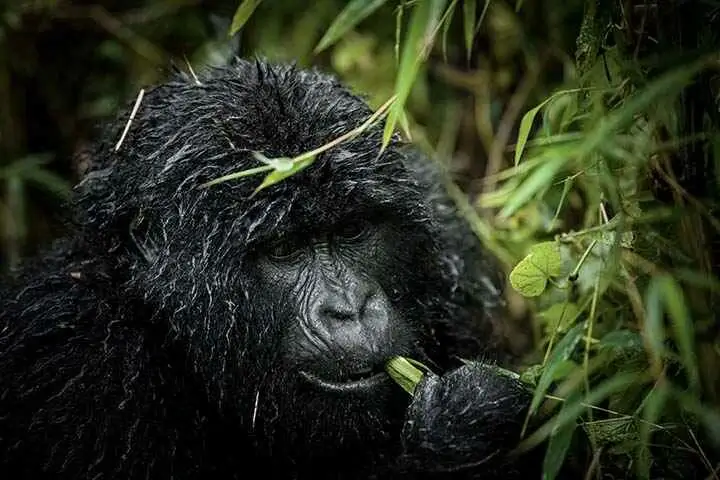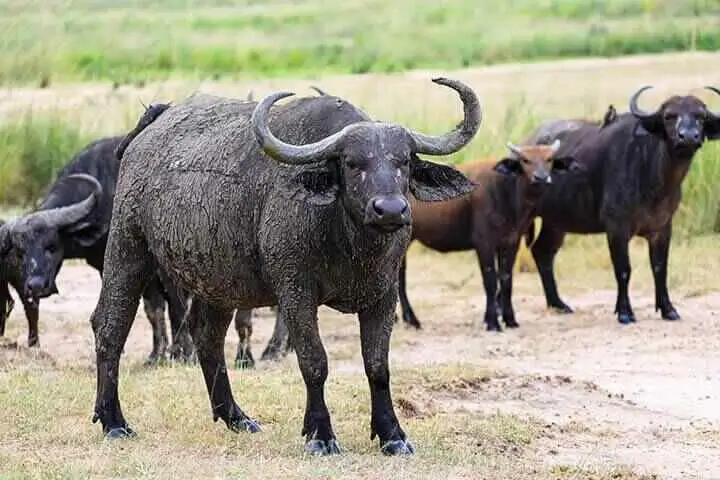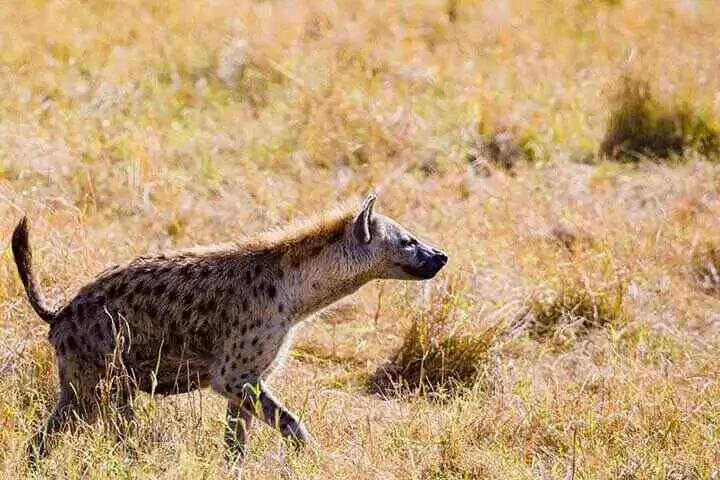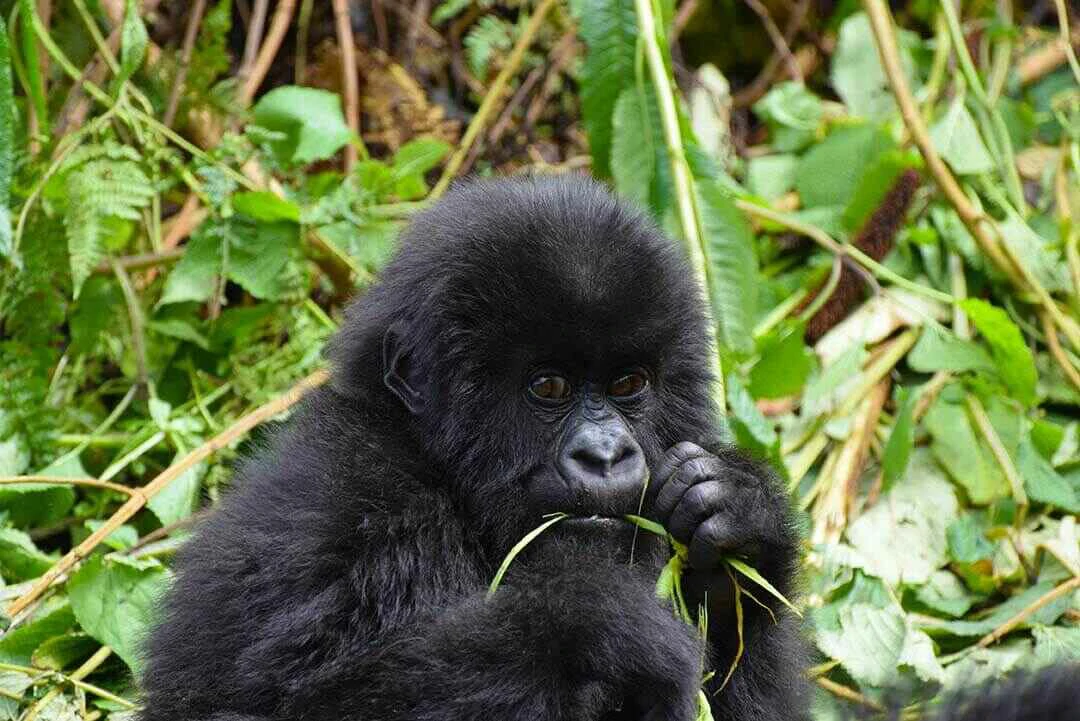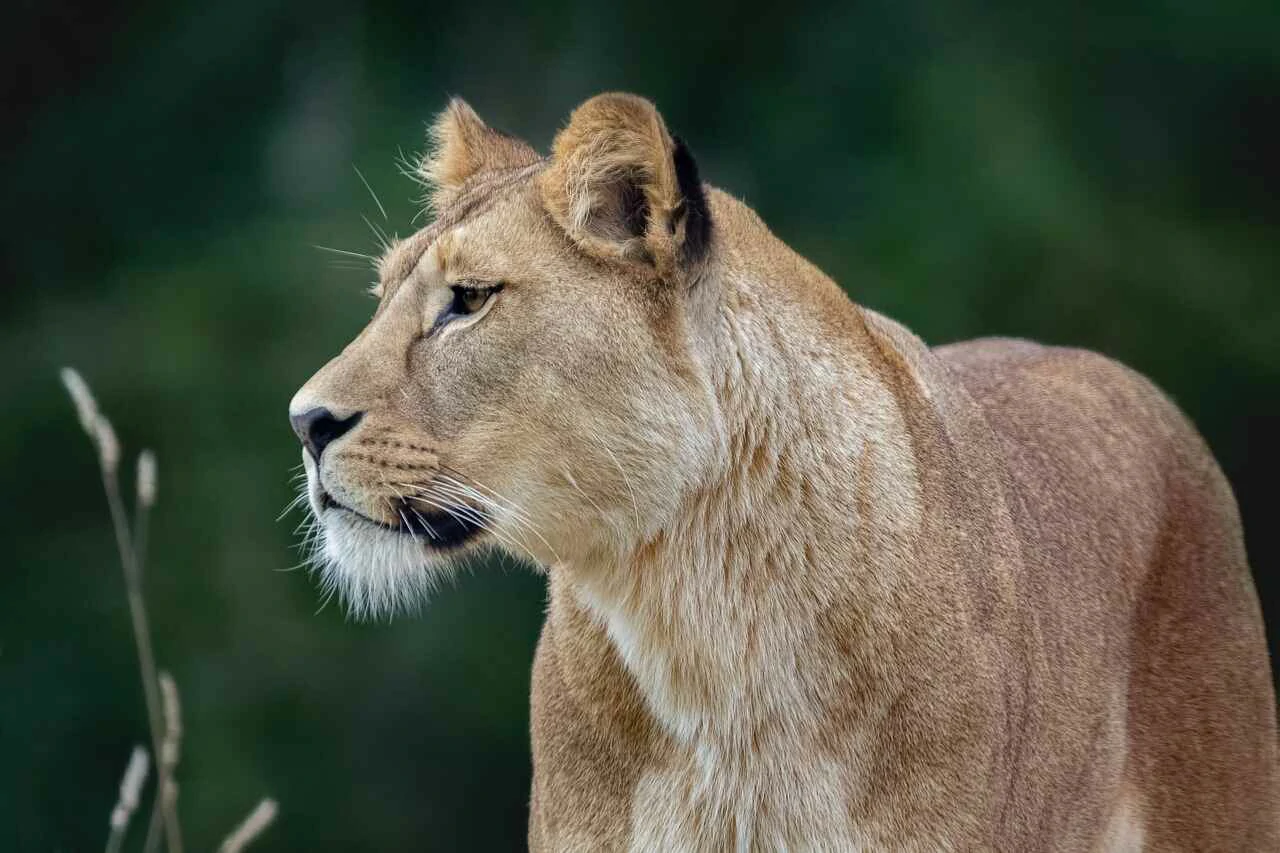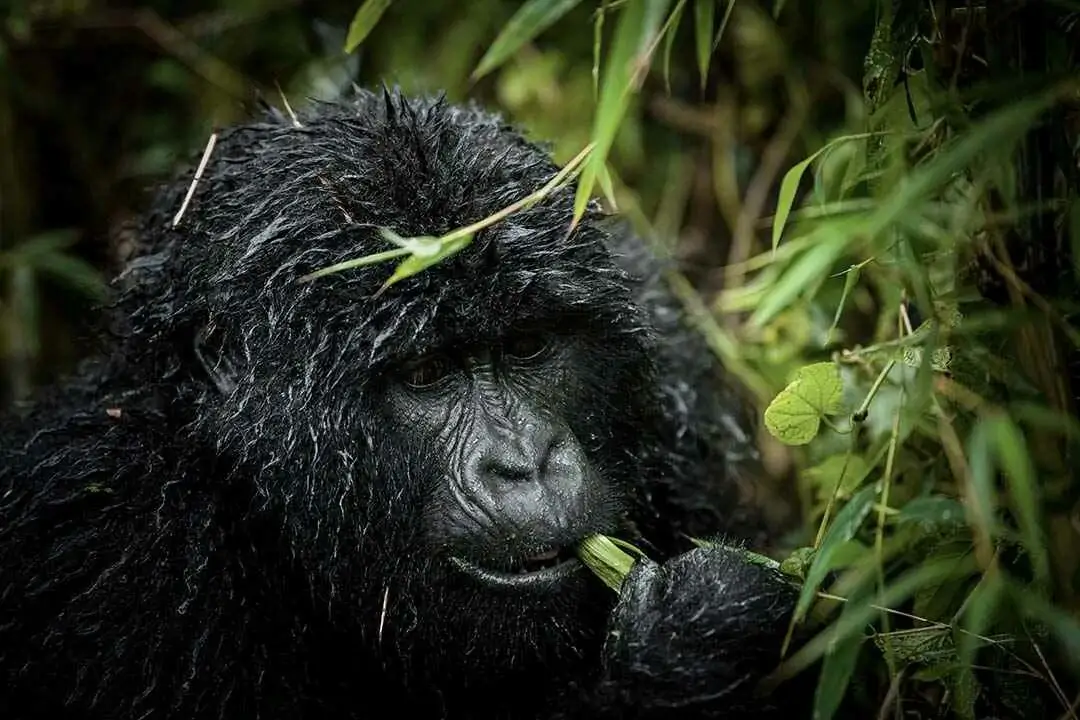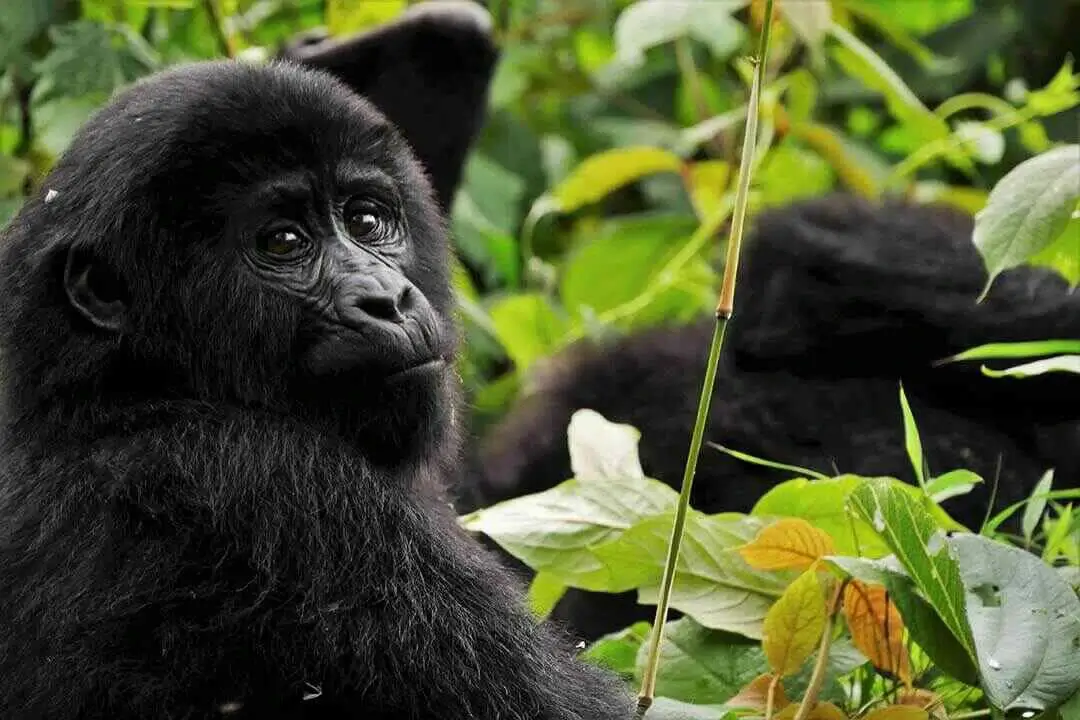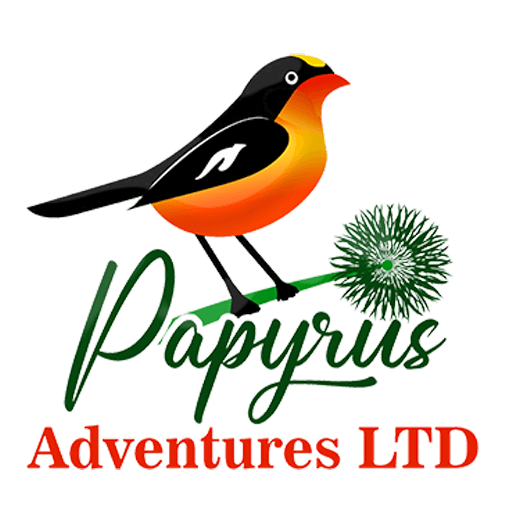Wildlife in Volcanoes National Park
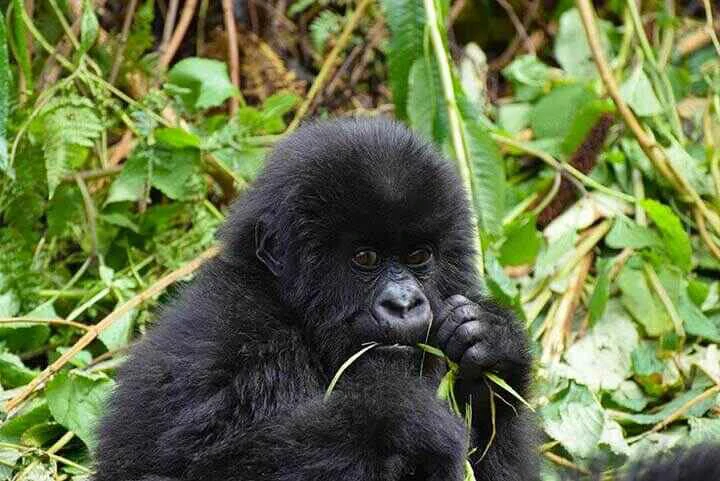
Mountain Gorilla
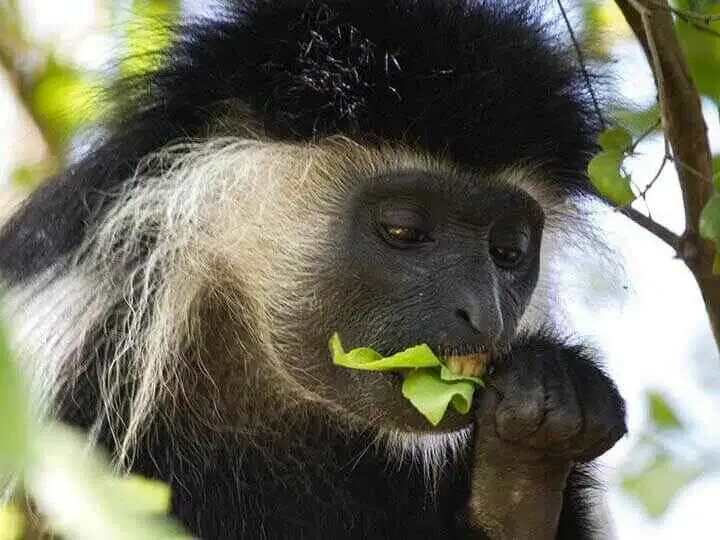
Colobus Monkey

Spotted Hyena

African Buffalo
Volcanoes National Park is located in Musanze northwest of Rwanda and borders Mgahinga Gorilla National Park in Uganda and Virunga National Park in Democratic Republic of Congo. The park covers 16,000 hectaresand is the place for mountain gorillas in Rwanda. The park is a home to five volcanoes of the Virunga Mountains shared between Uganda, Rwanda, and Democratic Republic of Congo. These include Bisoke, Gahinga, Sabyinyo, Karisimbi and Muhabura which are covered in bamboo and rain forest. Dain Fossey the zoologist used to have a base here and her tomb is here. The park is also rich with many other exotic activities to engage in. This park has an evergreen bamboo forest with grassland areas, swamp and heath in other areas. Gorilla trekking happening all year round at volcanoes national park
Because of the high altitude it is generally cold, especially early morning and the evenings, you are advised to carry a light sweater for these times. The park is located only 2 hours from Kigali in the north of Rwanda with the park headquarters at Kinigi village, the administrative center for permits and where all guests gather in the morning for briefings before starting the gorilla trekking.
Volcanoes national park has Rwanda's highest point; Mount Karisimbi at 4507m and two active volcanoes, Mount Nyamuragira and Mount Nyiragongo.
Vegetation/Flora
Volcanoes National Park vegetation is connected to the diverse altitudinal ranges and other factors like climate, steepness of slopes, soil, and exposure to the sun. Vegetation in Volcanoes National park entails rain forest, thickets, swamps, marshes, meadows, alpine forests and grasslands. The diversity of vegetation in the park has reduced due to the 2500 meters above sea level. Dombeya trees that grow at lower altitudes used to be common in the park but are currently rare. Some of the lower montane forest is now mainly lost to agriculture. Between 2400 and 2500 m, there is Neoboutonia forest, one of the largest forests of Hagenia abyssinica.
From 2500 to 3200 m Arundinariaalpina (bamboo) forest occurs, covering about 30% of the park area. From 2600 to 3600 m, mainly on the more humid slopes in the south and west, is Hagenia-Hypericum forest, which covers about 30% of the park. The vegetation from 3500 to 4200 m is characterized by Lobelia wollastonii, L. lanurensis, and Senecioerici-rosenii and covers about 25% of the park. From 4300 to 4500 m grassland occurs.
Animals /Fauna
Volcanoes national park is broadly known for mountain gorillas, which are a key focus for most tourists who visit Rwanda on safaris. They have effectively placed volcanoes national park on the world map thanks to the work of Dian Fossey and the movie Gorilla in the Mist. Diverse vegetation cover favors the habitation of animals and birds. Besides gorillas, the park is home to the endangered golden monkeys, spotted hyenas, black-fronted duiker,buffalos and bushbuckamong others. . Other animals found in the forest include, Forest elephants, buffaloes, bush pigs, giant forest hogs, duikers, spotted hyenas, bush-bucks and several primates.
Birds of Volcanoes National Park
Volcanoes national park is home to over 200 bird species 16 of which areendemics to Albertine rift for bird watching fanatics to enjoy. After mountain gorilla tracking, golden monkey trekking and birding is the next best thing to do in this park. Some of the bird species include: Rwenzorituraco, Rwenzoribatis, Rwenzori double - collared Sunbird, handsome francolin, Grauer's rush warbler, Archer's ground robin, collared Apalis, red-faced woodland warbler, strange weaver and dusky crimson-wing among others. Birders are advised to carry with them a pair of binocular and a camera to capture some memories of the Virunga birds especially the rare birds endemic to the Volcanoes Park.
Conservation
Volcanoes National park has faced some challenges in its conservation which include; Food insecurity is a driver of dependency on forest resources, with poor households supplementing their subsistence livelihoods by harvesting water, bushmeat, medicinal plants, bamboo and fuel wood from the park, high human population densities surrounding the park which reach as high as 1000 inhabitants per km2 in some areas, land is the primary economic asset and 90% of rural people in the region rely on subsistence farming with very few off-farm activities, Population growth due to the region's high fertility and the struggle for available resources and land are driving encroachment on the park's edge and wild honey gathering in the forest has also caused devastating accidental forest fires.
Volcanoes National Park introduced community-based tourism entrepreneurship working with communities around the village of Nyakinama where they work closely with women and youth cooperatives, integrating their views and wishes through participatory planning meetings, facilitating the access to market, enabling cooperatives to reach international tourists with their handicraft products and cultural activities. There also some environmental programs related to tourism products thus creating have positive impacts on biodiversity. The conservation model by park has helped in diversifying livelihoods and reduced forest resources dependency.
This has enabled the local community to be included in the tourism value chain, increase their economic status, thus allowing them to spearhead conservation in the Volcanoes National Park. The approach to community engagement in park with is bottom-up nature has led to development of infrastructure investments that create indirect benefits to the community through establishing cooperatives that run cultural activities, providing a venue for marketing the activities as a product to tourists.
Volcanoes National Park works with over 300 vulnerable women who lacked formal education, majority being widows or single parents across 5 cooperatives in an area of high rural poverty around the village of Nyakinama, 8km south of Musanze by encouraging basket weaving and selling to tourist which earns them a living. The impact of the Volcanoes national park conservation efforts had led to promotion of environment sustainability through projects that are socially suitable where there has been; firstly creation of jobs and opportunities for 120 artisans and craftspeople, performers and entertainers, lodgings, dining establishments, crafts supply stores; trained more than 35 youth to work in our campsite as local guides; and supported 25 local artists to engage in producing artistic materials speaking about the urge to conserve the environment; established local traditional dancing troop composed of 25 women and 5 men who do the drumming for the tourists, More than 100 women participate in tree planting activities, more than 200 women involved in making eco-friendly banana seed bags, to replace plastic bags, which also contribute to soil conservation, Beekeeping activity which is promoted outside the park provides income to the locals by selling natural honey to the tourists and nearby lodges/hotels thus gaining some income for themselves.
Activitives at this park
Bird Watching
Volcanoes National Park has over 200 bird species with 13 speciesendemic to Albertine rift where the park is located. Examples of birds seen here include; , red-faced woodland warbler, Rwenzori double collared crimson wing, the handsome fracolin, Grauer's rush warbler handsome francolin, and strange weave
Iby'Iwacu/ Gorilla Guardians Village
An initiative for the former gorilla poachers in the local community and now are conservationists. The village was started by Edwin Sabuhoro during his tenure as a warden at volcanoes national park with intent to change the lives of the poachers. Tourists visit the village to learn more about the conservation efforts of the community and get to make a living for the community. Tourists will take part in the activities of the day and be educated about the traditional lifestyles like music, dance and drama.
Location
HH9V+3W Ruhengeri, Rwanda
Size
160 km2 (62 sq mi)
Altitude
2,400m to 4,507m
Do You have any Questions?
Our Experts are ready to provide answers
Explore Out Top Tour Ideas
Travel With Us
When considering your next adventure, Papyrus Adventures stands out as the ideal travel companion, offering a comprehensive package of benefits that ensure an unparalleled experience.
Best Price Guaranteed
With our "Best Price Guaranteed" policy, you can rest assured that you are getting the most value for your investment.
Professional Safari Guides
Our commitment to excellence extends to our team of "Professional Safari Guides," who possess extensive knowledge and expertise, ensuring a journey filled with insightful and unforgettable moments.
Locally Owned Company
Papyrus Adventures is deeply rooted in the destinations we explore, allowing us to provide authentic and immersive experiences that showcase the rich cultures and landscapes of each location.
24-7 Customer Support
our "24-7 Customer Support" ensures that your needs are met around the clock, providing peace of mind and a safety net for any unforeseen circumstances.
Frequently Asked Questions About Volcanoes National Park
Tourists can visit the volcanoes national park for gorilla trekking at any time of the year although it's recommended to visit during the dry season of the year from June to Mid-September and December to February. It will be dry in the trails to track gorillas unlike in the rain season when it's slippery and wet.
